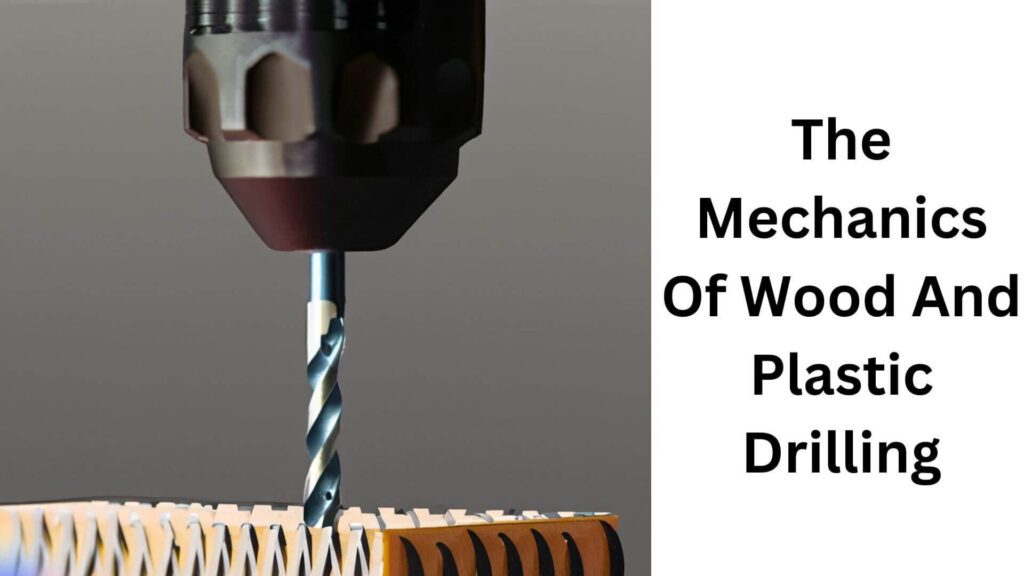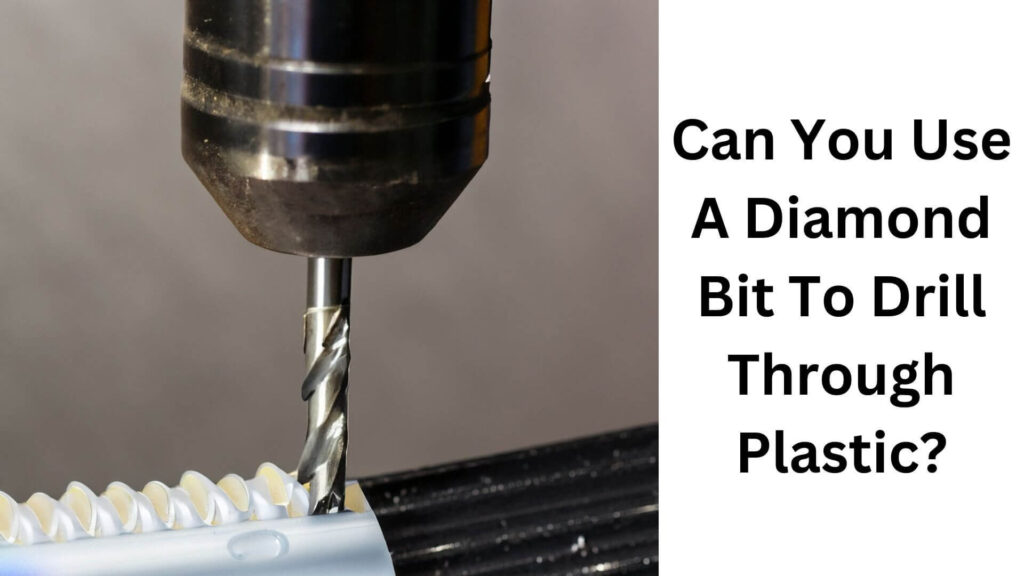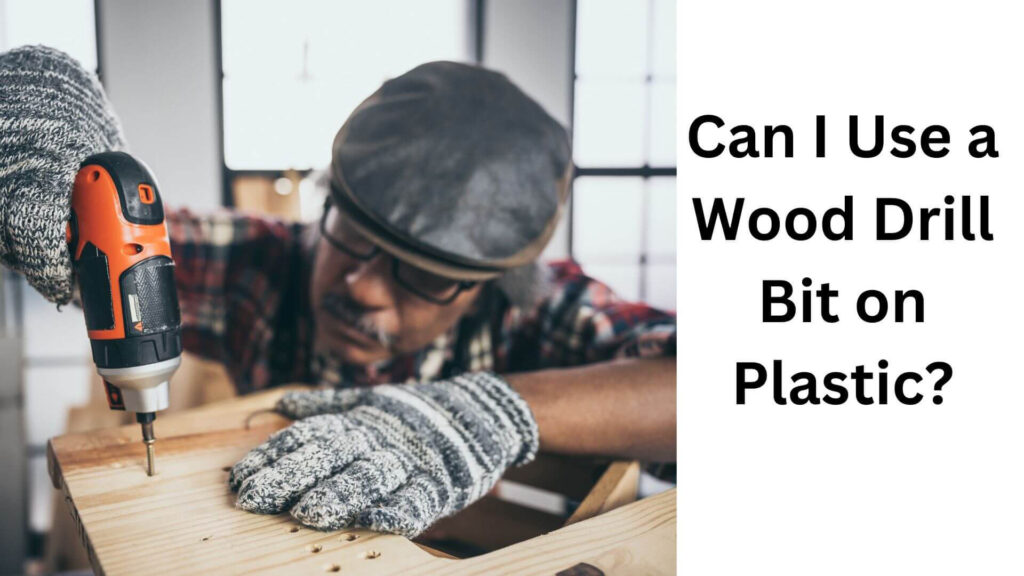Attention DIY enthusiasts! Are you about to embark on a project that involves drilling into plastic? Before you start, you might wonder, “Can I use a wood drill bit on plastic?”
While it may seem simple, a wood drill bit can be used on plastic. Using a wood drill bit on plastic is a common practice.
It is readily available, and drills clean holes without damaging the plastic material. However, it is essential to remember that the drill bit’s size and speed should be adjusted according to the thickness and density of the plastic.
Using a slow speed and less pressure during drilling can prevent the plastic from melting and ruining the hole. Using a lubricant like oil or water while drilling on plastic is also advisable.
In this article, we’ll explore the pros and cons of using a wood drill bit on plastic and provide expert tips on getting the job done right.
Check Also: Choosing the Ideal Drill Bit for Working with Plastic
Table of Contents
Understanding The Differences Between Wood And Plastic
Using the appropriate drill bit is crucial when drilling holes in different materials. Using the wrong drill bit can lead to poor results or even damage to the material.
Here I focus on the question, can I use a wood drill bit on plastic by understanding the differences between these two materials?
The Composition Of Wood
Wood is a natural material predominantly made up of cellulose and lignin. Apart from these two constituents, it contains varying amounts of water and organic substances.
These make it a fibrous and porous material that can be easily worked on using different tools, including a wood drill bit.
Using a wood drill bit on plastic may seem easy, but there might be a better one. The following section discusses the composition of plastic to understand why.
The Composition Of Plastic
Plastic is a synthetic material of long-chain polymers made from natural gas or crude oil. These polymers make plastic a versatile material that can be molded into various shapes and sizes. Plastics are categorized into several polymer families based on their chemical composition and properties.
Some joint families include:
- High-density polyethylene (HDPE)
- Polyvinyl chloride (pvc)
Using the right drill bit for plastic is crucial since it is a soft and flexible material. Using a wood drill bit on plastics may cause overheating and melting of the plastic.
Additionally, wood drill bits have a sharp point, which can cause the plastic to crack and break, leading to uneven or jagged holes.
Selecting the right drill bit for the material you are working with is essential. Understanding the differences between wood and plastic should make it easy to see why using a wood drill bit for plastic is not a good idea.
Using a drill bit specifically designed for that purpose is always a good idea when drilling plastic.
Read More: Determining the Right Drill Bit Size for Plastic Anchors
The Mechanics Of Wood And Plastic Drilling

When it comes to diy projects or home repairs, using the correct drill bit is crucial for achieving optimal results.
While using a wood drill bit on plastic is a viable option, the two materials have different characteristics that can affect the drilling process.
Here, I’ll explore the mechanics of wood and plastic drilling to understand better the drill bit’s role, the size and shape of wood drill bits, and the ideal speeds for drilling through both materials.
The Role Of The Drill Bit
A drill bit is a cutting tool for boring holes into various materials, including wood and plastic. The success of any drilling project largely depends on selecting the correct type of drill bit for the material being drilled. Using the wrong drill bit can result in damaged bits, material, and, worst-case scenario, personal injury.
Understanding The Size And Shape Of A Wood Drill Bit
Wood drill bits come in different sizes and shapes. They are designed with a twist or spiral-shaped tip that helps to remove the material as the bit bores through the wood.
The size of a wood drill bit is determined by its diameter, and the most commonly used sizes range from 1/16 inch to 1 inch.
The size you choose will depend on the size of the hole you need to drill.
The Ideal Speed For Drilling Through Wood
Drilling through wood requires a specific rate of speed that will provide enough torque to drill through the material efficiently. A general rule of thumb is that the denser the wood, the slower the speed required. For softwoods (e.g.)
(Douglas fir or pine), aim for speeds between 1,500 and 3,000 revolutions per minute (rpm), while for hardwoods (e.g., oak or maple), speeds should be kept between 500 and 1,000 rpm.
Using a higher speed than required may lead to overheating, which can cause damage to the bit and the material you’re drilling.
The Ideal Speed For Drilling Through Plastic
Drilling through plastic also requires a specific speed to avoid cracking the material. As with wood, the denser and more complex the plastic is, the lower the rate of speed required. For most types of plastic, including polypropylene and polyethylene, it’s best to use speeds around 2,000 rpm.
However, for more rigid plastics, including acrylic and polycarbonate, a lower rate of speed, around 500 rpm, is recommended.
Using a wood drill bit on plastic is not optimal for optimal results. You can ensure a safe and successful project by choosing the right drill bit and drilling at the appropriate speed. Remember that safety should always come first when undertaking any diy project or home repair.
Read More: The Viability of Plastic Drill Bits: A Closer Examination
The Effectiveness Of Wood Drill Bits On Plastic
Wood drill bits are standard in every carpenter’s wood and other materials toolkit. However, as a beginner, you may wonder if a wood drill bit is effective on plastic. While wood drill bits work on plastic, they are only sometimes the most effective option.
Here I’ll be discussing the effectiveness of wood drill bits on plastic, including their advantages and disadvantages.
The Advantages Of Using A Wood Drill Bit On Plastic
Wood drill bits are famous for drilling into plastic due to their affordability and availability. Here are some advantages of using a wood drill bit on plastic:
- Wood drill bits are inexpensive and can be used for various materials.
- Most drill sets come in various sizes, with drill bit sizes up to one inch common.
- Wood drill bits are widely available, making it easy to replace them when they become dull or worn out.
- They are versatile and can be used for various plastic applications, including drilling small and large holes.
The Disadvantages Of Using A Wood Drill Bit On Plastic
While wood drill bits can be used on plastic, there are better choices for drilling holes. Here are some disadvantages of using a wood drill bit on plastic:
- Wood drill bits are only sometimes precise, which can lead to mistakes while drilling.
- They need to work better when drilling through thick or rigid materials.
- The tip of a wood drill bit may get stuck in the material, which can cause damage to the plastic.
- Due to their design, wood drill bits may generate heat during drilling, which can melt the plastic, causing damage to the bit.
While wood drill bits may work on plastic, it is not always the best option. Depending on the thickness and hardness of the plastic material, investing in a specialized drill bit designed explicitly for plastic may be necessary.
When using a wood drill bit on plastic, ensure that the drill bit is sharp and lubricated to prevent damage to the bit, and avoid drilling at high speeds to reduce heat generation.
Read More: How to Use a Step Drill Bit on Plastic?
Can You Use A Diamond Bit To Drill Through Plastic?

Yes, you can use a diamond bit to drill through the plastic. Diamond bits are known for their durability and ability to cut through rigid materials.
When drilling through plastic, using a diamond bit specifically designed for the job is essential. These bits are made with a high concentration of diamond particles, which allows them to create clean and precise holes in plastic without cracking or melting the material.
Using the proper drilling technique is also essential to avoid damaging the plastic. Start by marking the spot where you want to drill, and then use a slow and steady drilling motion, applying light pressure.
Keep the drill perpendicular to the surface to ensure a straight, clean hole. Drilling through the plastic with a diamond bit can be quick and easy with the right tools and technique.
Can You Use A Hole Cutter Drill Bit On Plastic?
If you want to know whether you can use a hole cutter drill bit on plastic, the answer is yes, you can. However, there are a few things you need to keep in mind.
- Firstly, you need to select a drill bit suitable for plastic. The ideal drill bit for plastic is made of high-speed steel and has a sharp point.
- Secondly, you need to adjust the speed of your drill to prevent the plastic from melting or cracking. Using a slower speed and applying light pressure to the drill is recommended.
- Lastly, wear protective gear such as safety glasses and gloves to avoid injuries.
Following these instructions, you can safely use a hole cutter drill bit on plastic and achieve the desired results.
Will A Glass Drill Bit Work On Plastic?
If you are wondering whether a glass drill bit will work on plastic, the answer is yes, it can. However, it is essential to remember that the drilling process may differ for plastic compared to glass.
- Firstly, it is recommended to use a slower speed when drilling into plastic to prevent overheating and melting. Using a lubricant such as water or oil is also essential to prevent the plastic from melting and keep the drill bit cool.
- When drilling into plastic, it is also essential to start with a little drill bit and gradually increase the size to avoid cracking or damaging the plastic.
- Lastly, wearing protective gear such as safety goggles and gloves when working with a drill is essential to prevent accidents or injuries. Following these precautions, you can successfully use a glass drill bit on plastic.
Will A Paddle Bit Drill Through Plastic?
If a paddle bit can drill through plastic, the answer is yes. Paddle bits are designed to drill through various materials, including wood, plastic, and metal.
When drilling through plastic, choosing the correct bit size for the job is essential, as using a slow speed to avoid melting the plastic. It’s also necessary to secure the plastic properly to prevent it from moving during drilling.
Additionally, it’s recommended to use a lubricant or coolant to prevent overheating and to ensure a smooth drilling process.
When drilling through plastic, it’s essential to take safety precautions, such as wearing eye protection and working in a well-ventilated area. Unfortunately, drilling through the plastic with a paddle bit can be straightforward with the right tools and techniques.
Alternatives To Wood Drill Bits For Plastic Drilling
Types Of Drill Bits For Plastic Drilling
When drilling plastic materials, knowing which bit to use is essential to avoid damaging the material. Although wood drill bits may work for plastic, many alternatives work better. Here are some of the essential types of bits for plastic drilling:
- Brad point drill bits: Excellent for drilling soft and hard plastics; the pointy end of the bit positions it correctly for accurate and clean cuts.
- Twist drill bits are suitable for most plastic types except for hard plastics. They can quickly drill holes of different sizes and work efficiently for diy purposes.
- Spade drill bits: These are flat and work well for drilling larger holes in plastics. However, they could be more accurate, so they may not be suitable for some tasks.
Understanding The Differences Between Plastic Drill Bits And Wood Drill Bits
When it comes to drilling plastic, using a wood drill bit may or may not work, depending on the thickness and hardness of the plastic. Here are some critical differences between plastic drill bits and wood drill bits:
- Material composition: Plastic drill bits have a unique design that tolerates higher temperatures than wood drill bits. Consequently, they can drill through plastics without melting or deforming them.
- Point shape: Generally, plastic drill bits have sharper points that can pierce through plastic better than wood drill bits.
- Cutting angle: The cutting angles of plastic and wood drill bits differ. Wood bits have a cutting angle of 90 degrees, while plastic drill bits have a 60-degree angle, making it easier for them to cut through the plastic.
- Using wood drill bits: plastic drilling is only sometimes the best option. Knowing the available alternative bits and the differences between plastic and wood bits is essential to make accurate and clean cuts.
Choosing the right bit for plastic drilling will extend the life of your bits and save both time and money in the long run.
Frequently Asked Questions On Can I Use A Wood Drill Bit On Plastic
Can I Damage The Plastic While Using A Wood Drill Bit?
Plastic is softer than wood, so drilling it with a wood drill bit won’t damage it easily.
What Type Of Wood Drill Bit Should I Use?
A brad-point or spur-point wood drill bit is best for drilling plastic materials.
Can I Use The Same Wood Drill Bit For Both Wood And Plastic?
While wood drill bits work for both materials, a new one for plastic is recommended.
What Precautions Should I Take While Drilling Plastic With A Wood Drill Bit?
Use low drilling speed, don’t apply too much pressure, and let the bit cool frequently while drilling plastic.
Final Remarks
Using a wood drill bit on plastic is possible; however, it is not recommended for optimal results. A wood drill bit has a different design than a plastic drill bit, making it less effective at drilling through plastic.
Additionally, wood drill bits can cause deformation in plastic or create rough edges, which can be problematic if precise cuts are needed. In contrast, plastic drill bits have a sharper edge and can easily penetrate plastic without causing any damage.
Using the right tools to achieve the best outcome is always important. For example, if you are looking to drill through plastic, using a plastic drill bit is recommended to avoid potential problems and ensure the best results.

Hey, I am MD Hrithik Hossain, I’m a huge fan of DIY crafts. My workshop is where I spend most of my spare time, and I’m always working on some project. To that end, I’d like to share some of my knowledge and experience with you in power tools, woodworking, and other specialized materials fabrication.
I will guide you with genuine knowledge that can assist you with deciding whether a drill is appropriate according to your requirements or not. If you want to find the best drill and know which type of drill is most suited for your needs, then I can guide you with my expertise. My passion lies in helping others find the correct products they need at an affordable price.


